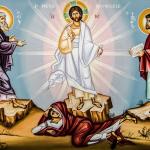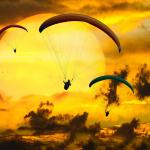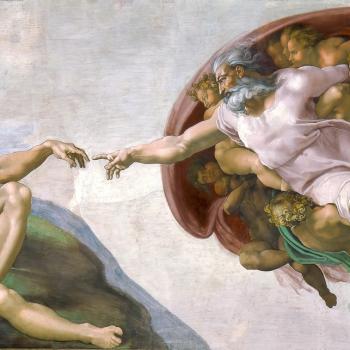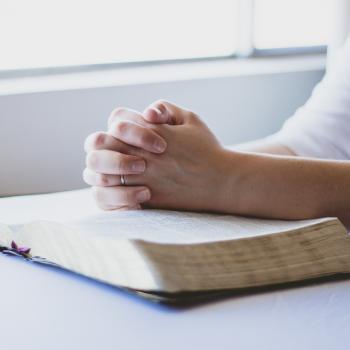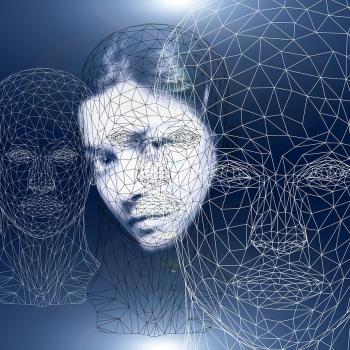Of One Mind: Separately United
At times the sense of being alone can make one yearn to forget that feeling of alienation. We want to lose our selves, to feel an identity with others and belong. And so people drink. Or do drugs. Or knock themselves out with pills. Anything to forget themselves, to shake that horrible sense of a solitary existence. Omar Khayyam wrote:
I drink not from mere joy in wine nor to scoff at faith—no, only to
forget myself for a moment, that only do I want of intoxication, that alone.
The game is to lose and then find oneself. But we’re searching in the wrong places. There is a better way.
Love.
Not romantic love.
Not sexual love.
But the love in which our small ego expands to include others. With that love we can experience the other not as separate or different, but as connected to ourselves in some way.
Lost in the Dance
When we no longer see everything revolving around ourselves, we are then able to see ourselves and all things revolving together. Life becomes an integrated, organic, dynamic unity.
In the letter she sent to me, Barbara called this harmonious interconnectedness a dance. (And, as Yeats said, “Who can tell the dancer from the dance?”) Barbara wrote:
In the large dining room at Sunday dinner there was a great calmness
and peace. Only the classical music in the background broke the silence. Girls
in long navy skirts and white blouses glided about gracefully in the ritual of serving.
All the steps in the long process of growing and preparing the food had culminated
in this ballet. We each had our parts to play, but we were minor characters. The important
thing was that all the parts had come together to form this moving whole.
If one feels a part of the whole, even a simple daily activity like dining can become a consecrated act, every gesture a prayer, every movement a dance. One senses oneself to be an integral part of the rhythm.
One can get a feeling for this rhythm in activities where there are no assigned roles. On a hot summer day at the beach, for example, there is swimming, walking, playing catch, sunbathing, eating, talking. . .all the activities that go together to make what we might call ‘beaching.’ It doesn’t matter which part anyone plays; what counts is that everyone together has created actions that together make up the one large and colorful tableau of people enjoying the beach, the water, and the sunshine. When one is a part of the whole choreography, all the parts fit together to make one action. Instead of a personal consciousness, one can very easily feel as if there is only doing—not “I” think, not “I” do, just the activity rising out of itself.
When a person loses that sense of being separate, even briefly, there is a dramatic change of mind. As my friend Sam wrote,
I try to imagine that my individuality is not permanently enclosed in
one place. That it is a quality of awareness, not a location. I imagine it roams
from my body like a bird from its nest. . .mixing and matching with others.
We are so used to thinking of the mind as something like a container, filled with the ego, the unconscious, the emotions, and so on. . .even the self. We can almost picture the mind in the familiar image of a partially submerged iceberg, heavy with its contents. But those images are only metaphors. As Sam’s letter suggests, we do not have to localize the mind. Mind is not a thing; it is a process, an activity. Mind is a way of interpreting, interacting, and experiencing events. The unblocked mind is open, dynamic awareness, freely flowing without form or structure. And, in an open mind, the trapped ego can take off “like a bird from its nest.”
The insight that it is possible to disengage the subject ego is what Alan Watts defined as the key to nirvana: “release from the false problem.” He described it like this:
A radical transformation of how it feels to be alive; it feels as if everything
were myself, or as if everything—including ‘my’ thoughts and actions—
were happening of itself. There are still efforts, choices, and decisions,
but not the sense that ‘I make them’; they arise of themselves in relation
to circumstances. This is therefore to feel life, not as an encounter between
subject and object, but as a polarized field where the contest of opposites
has become the play of opposites.
We know this feeling already. There have been natural, spontaneous instances of it all along. It has enveloped us in moments of selfless love, when the boundary between our self and the other melts in deep emotion. It has come over us when we lose ourselves in transpiring music, in the sunlight shimmering over dancing waves, or in any other transcendent experience of beauty, truth, and harmony.
In all these experiences, the sense of individuality remains, but it is larger, not confined to the ego box. Suddenly we are greater than our personality. We feel ourselves connected to a pulsing and rhythmic flow of life, part of a grander design, open, loving and peaceful. “There is one common flow, one common breathing,” Hippocrates said; “All things are in sympathy.” We are a part of the whole.
The Kaleidoscope
In Natalie’s letter, not only do all the parts make up the whole, but the whole is mirrored in every one of its parts. She wrote,
You asked about a change of mind, but any example I could think of
is just one tiny piece of my mind from what seems to be a constantly changing
process. Sometimes pieces are added (learning), sometimes they are subtracted
(forgetting), but most of the time the pieces of my mind are just rearranged in
constantly changing patterns. So here is my example:
On my table is a kaleidoscope with bits of jewel-colored glass, the kind
I used to have as a child. Held up so the light shines through it, the kaleidoscope
continuously manifests endless patterns of stained-glass designs, no two of which
are ever alike. To me, a kaleidoscope is a mystery; even as a child I sensed
something of the infinite in it, and I was in awe.
Now as then I still wonder that all the various pieces fit together into each
crystal design, so fragile that one arrangement flows into another, each as beautiful
as the one before. In the intrinsic perfection and beauty of the kaleidoscope,
not one piece is lacking or superfluous to the whole.
Recently I was told that it is all done with mirrors.
Why doesn’t it lessen my appreciation to have learned that everything is a reflection of one?
Natalie’s letter is a perceptive and beautiful illustration of endless change. In describing the kaleidoscope, she is, of course, talking about more than the changes of her own mind; she is also implying that each piece is a microcosm of many minds, coming together and moving apart, but all fitting together, emerging from the same light in infinite ways. As Natalie said, “everything is a reflection of one.”
One in All
Others have used similar images of reflection. In the Vedas, there is a description of Indra’s heavenly necklace, a network of pearls so arranged that by looking at one, it is possible to see all the others in it. And in the Book of Thomas, Jesus said, “Whoever has known himself has simultaneously achieved knowledge about the depth of all things.”
For Colleen, what Watts called “the false problem” dissolved for “just a few seconds” into a transpersonal sense of oneness and peace. When the mind is freed from limits and constraints, there is a meeting with the higher self, a self that Colleen said “was not separate from the ‘real self’ of others
I was outside on the patio at dusk. Suddenly I was no longer directing
the movements of my body from somewhere inside my head. I seemed to be
everywhere, outside of my body, too, in the darkened shapes of the trees and
bushes in the garden, in the air and in the sky. For just a few seconds it seemed
that I could look down on that small part of me that was trapped inside my physical
body. My ‘real self’ had no limits, no constraints. It was an ocean of consciousness
that contained me. This lasted so quickly that I can barely describe it. What stayed
with me longer was the impression that, because my ‘real self’ was everywhere, it
was not separate from the ‘real self’ of others.
The last few lines of Colleen’s letter are so simple, yet so profound, they could reflect one of the Upanishads: “When a man understands the Self has become all things, what sorrow, what trouble can there be to him who once beheld that unity.”
God is not a separate entity. That recognition represents a quantum change of mind. Human and divine cannot be separated any more than ego and self could be. Or part and whole. Or figure and ground. As children we were taught “God is everywhere; God knows everything.” How else to be omnipresent and omniscient than to be consciousness itself—not the finite human variety, but the unlimited consciousness that is everywhere, in every mind and beyond. That consciousness informs us through intuition, inspiring creativity, knowing all, yet giving freedom and allowing choice.
“There is one mind common to all men,” Emerson wrote. That mind is not in us so much as we are all contained in it. We are all part of each other.
Love
When we lose the hard, outer edge of resistance and defensiveness, there is a softening that makes it possible to merge with others. That does not mean we become weak. The cutting edge of the mind—sharp, decisive—still functions when it needs to. But more often now, instead of cutting, the mind also spreads a sweet butter of compassion. We learn how to love.
Love is the supreme law, the center emphasis of all the great religions. Only love transcends all differences. Consciousness of God and the other includes the consciousness of God in the other. A child’s poem learned long ago illustrates the expansiveness of love,
“Hate drew a circle that shut me out,
Heretic, rebel, a thing to flout;
But love and I had the wit to win,
We drew a circle that shut hate in.”
Love has no boundaries. Or, if it does, at least those boundaries are wide enough to allow us to merge with the other. We come closest to this when we experience complete peace with those we love, when we lose the tensions of distinction. As the Taoist Huang Po said, “You never can experience one-ness while you are in ‘two-ness.’”.
Through love there is a greater manifestation of the Spirit in the world. Michelle explained her change of consciousness like this,
What I do, how I face each rising wave of experience, is one way in which
God experiences His world. To the extent that I am godlike and do not give in
to base pettiness, the whole world advances in evolution. We are all related.
While it is difficult to say where one mind begins and another mind ends, in One Mind, we are all separately united. The influence of any one person can spread like concentric circles in the water.
The late Indian teacher Sai Baba wrote,
Love is the realization, the most powerful force in creation.
The whole Cosmos is just a dance of love—our true nature when
we cease to deny it. God is love, and if we would know ourselves
as God, we must know ourselves as love. Only in love are we God and thus merged in Him.
In these pages, teachings from many of the world’s major religions have been included. They all agree in the essentials. Because of One Mind, as Christ said, “I and my Father are one.”


